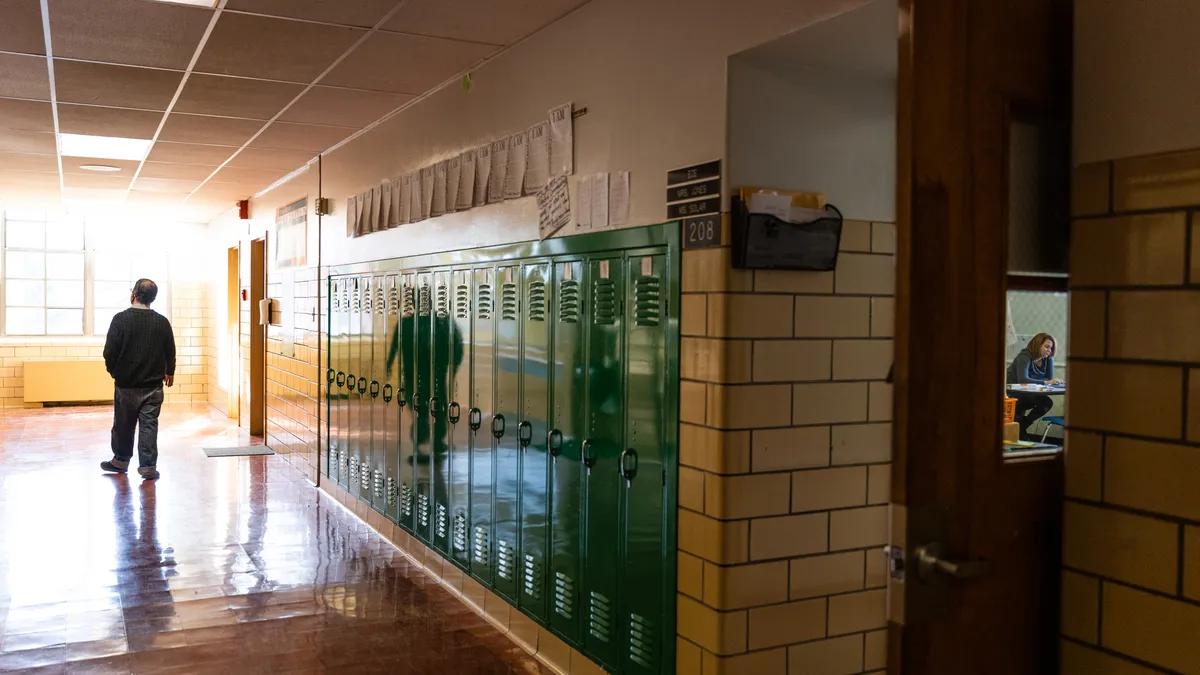Dive Brief:
- Some 84% of Minnesota public school districts and charter schools said they are affected by teacher shortages in a very significant or significant way, according to a survey of 285 school systems by the Minnesota Professional Educator Licensing and Standards Board. That’s a significant increase from 2021 when 70% of surveyed districts reported the same concern.
- The surveyed districts said the top three factors contributing to teacher shortages are the lack of applicants in the candidate pool (91%), the inability to compete with the wages and benefits of local employers (67%), and the negative perception of teaching and education overall (57%), according to the latest report.
- Almost a third of new educators quit teaching in the state within five years of starting their careers, the report found. There was a similar finding in the board’s 2021 data.
Dive Insight:
Reports on teacher shortages in additional states suggest the challenge is worsening elsewhere.
In Colorado, 85% of educators recently said teacher shortages are significantly or somewhat worse now compared to previous years, according to a Colorado Education Association survey.
The South Dakota Department of Education told state legislators on Wednesday the turnover rate has nearly doubled for educators between fiscal years 2021 and 2022, KELO reports.
However, data indicating statewide shortages doesn’t necessarily suggest all local districts are experiencing staffing concerns in a given state, according to a working paper published in November by Brown University’s Annenberg Institute for School Reform. Or if there are shortages in a district, the issue may not be prevalent statewide, the study analyzing shortages throughout Tennessee found.
While teacher shortage concerns at the state level in some areas have yet to dissipate, many solutions are gaining traction throughout the nation, including grow-your-own programs, registered teacher apprenticeships, and educator salary hikes. Even so, such emerging initiatives will take time to see if there are positive outcomes.
The U.S. Government Accountability Office shared a report in October calling on the U.S. Department of Education to measure the performance and milestones of the five strategies it outlined in summer 2022 to improve teacher recruitment and retention. The Education Department’s strategies touched on helping teachers pay off their student loans, investing in diversifying the teacher pipeline, providing opportunities for teacher advancement and more.
The Minnesota report also backed findings from the GAO analysis — there’s a consistent challenge to keeping and recruiting teachers due to the negative perception of the education field. Those concerns about the public perception of K-12 can be seen in The Hunt Institute’s November survey that found 48% of voters’ confidence in public education has dropped since the COVID-19 pandemic began.
One in four teachers reported local and state restrictions on race and gender topics caused them to change their curriculum, according to a RAND Corp. survey of 8,000 public school educators nationwide. Such limitations have also negatively impacted teachers’ working conditions, the RAND Corp. report found.








 Dive Awards
Dive Awards





